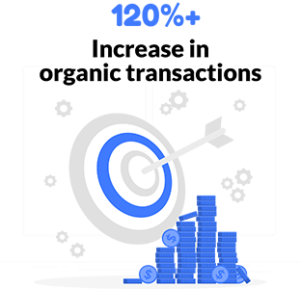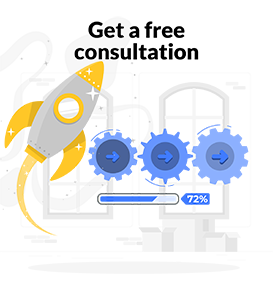Search Engine Marketing (SEM): How to Do It Right
SEM is a marketing strategy that involves the use of paid search advertising. SEM is used to enhance or replace other online marketing efforts and can get you in front of potential customers who are actively looking for your products or services. So, What is Search engine marketing, and How to do it right? This article will help you learn about the different types of SEM, how to do it right and why it’s important for your business’ success.
Search Engine Marketing is marketing, not SEO
If you go to the Wikipedia page for SEO, you’ll see that it says: “Search engine optimization (SEO) is the process of affecting the visibility of a website or a web page in a search engine’s unpaid results. Often referred to as “natural”, “organic”, or “earned” results.” This implies that SEO is all about improving your website so Google will reward you with higher rankings in their organic listings. It’s also clear that such an approach can take time and resources to implement, as well as being prone to fluctuations based on changes made by Google.
This is not exactly how Search Engine Marketing works at all! SEM stands for Search Engine Marketing and refers more specifically to paid ads on search engines like Google AdWords which drive traffic directly to your site rather than just optimizing your pages so they rank better organically over time (and potentially driving people back through links). While there may be some overlap between these two terms because both involve driving users from another site/platform directly over here instead of having them find us organically through organic discovery channels like links from other sites/blogs etc. So, we’re aiming for very different things with each tactic.

Search Engine Marketing isn't a one-time fix
SEO and SEM are not the same things. SEO is a long-term commitment, while SEM requires more of an immediate, short-term approach. But both are important to your website’s success.
SEO is a long process that takes many months or years before you start seeing results. You won’t see any real ranking changes within the first few weeks after launching your site or blog post. It takes time for search engines to crawl (or “index”) new pages on your site. So, they can begin indexing them in their databases. Once this happens, Google will start looking at those newly indexed pages as potential matches when someone searches for terms related to your business or industry.
However, when optimizing those new pages and posts, add meta descriptions and titles. Adding links from other relevant sites. Make sure internal links go where they should. You shouldn’t expect immediate results either! These techniques all take time before they start working properly too: think about how long it took for you to get really good at typing fast on a keyboard compared with what it was like when you first started using one!
Search Engine Marketing isn't always easy
SEM is not as easy as it sounds. It requires a lot of time, effort, and money to get right. SEM isn’t meant to be a quick fix. It’s a long-term strategy that requires your sustained commitment. That said, there are ways you can effectively get started on your journey toward successful SEM marketing. Let’s take a look at some of the most important aspects of SEM that will help you build up your campaign and improve results over time:
SEO is still king when it comes to organic search engine traffic; however, paid ads have their place in driving users towards landing pages where they can convert into leads or customers. Remember that keyword research should play an essential role in all stages of the buying process from discovery to post-purchase customer service interactions.

Search Engine Marketing isn't cheap
SEM is not cheap. If you’re looking for a one-time fix, it’s not the answer. SEM is not a quick fix, but rather a long-term strategy to increase your business’ search rankings, drive traffic and boost sales.
That said, it can be effective, and it does take time. Think of how long it took you to get where you are now with your website and marketing strategy: weeks or months? It’ll take just as long (or longer) in most cases to see results from SEM.
But the payoff can be big. SEM is a proven strategy for businesses of all sizes, from startups to established brands. In fact, according to AdAge, companies that use SEM have seen an average of $2.5 million more in revenue than those that don’t!
SEM drives conversions
To get the most out of your SEM campaign, it’s important to understand what conversions mean. A conversion is defined as any action you want a user to take after seeing your ad. These can include things like:
- Purchases or sales
- Signups for a newsletter or other promotional offer
- Clicks on a link that takes them somewhere else in your
website (like an online store) - Downloading an eBook or whitepaper
Conversions are the ultimate goal of any SEM campaign. They show that people are taking action based on what they saw in your ad, which indicates that these ads are working. A conversion can also be seen as proof of how well the keywords and search terms you used were targeted at potential customers. The more conversions you see from this set of keywords and search terms, the better job you did targeting them!
SEM is not for the faint at heart or the frugal
SEM is not for the faint at heart or the frugal, but your ROI will make you a believer.
Many marketers are hesitant to invest in search engine marketing because they feel it is too expensive. While SEM can be expensive, it’s important to remember that if done right, the investment will pay off with increased traffic and conversions at a lower cost per lead or sale than any other channel.
SEM is not a one-and-done strategy. You need to consistently monitor your campaigns, adjust bids and budgets, and test new strategies to make sure you are getting the most out of your SEM investment.
Final words
SEM is an important part of any digital marketing strategy. It’s not the only piece and it does not replace traditional advertising, but it does help you reach more people with your message.
Curious about the ins and outs of digital marketing?
Subscribe to our email newsletter for the latest digital marketing insights, and also make sure to read our blogs. See you next time!






